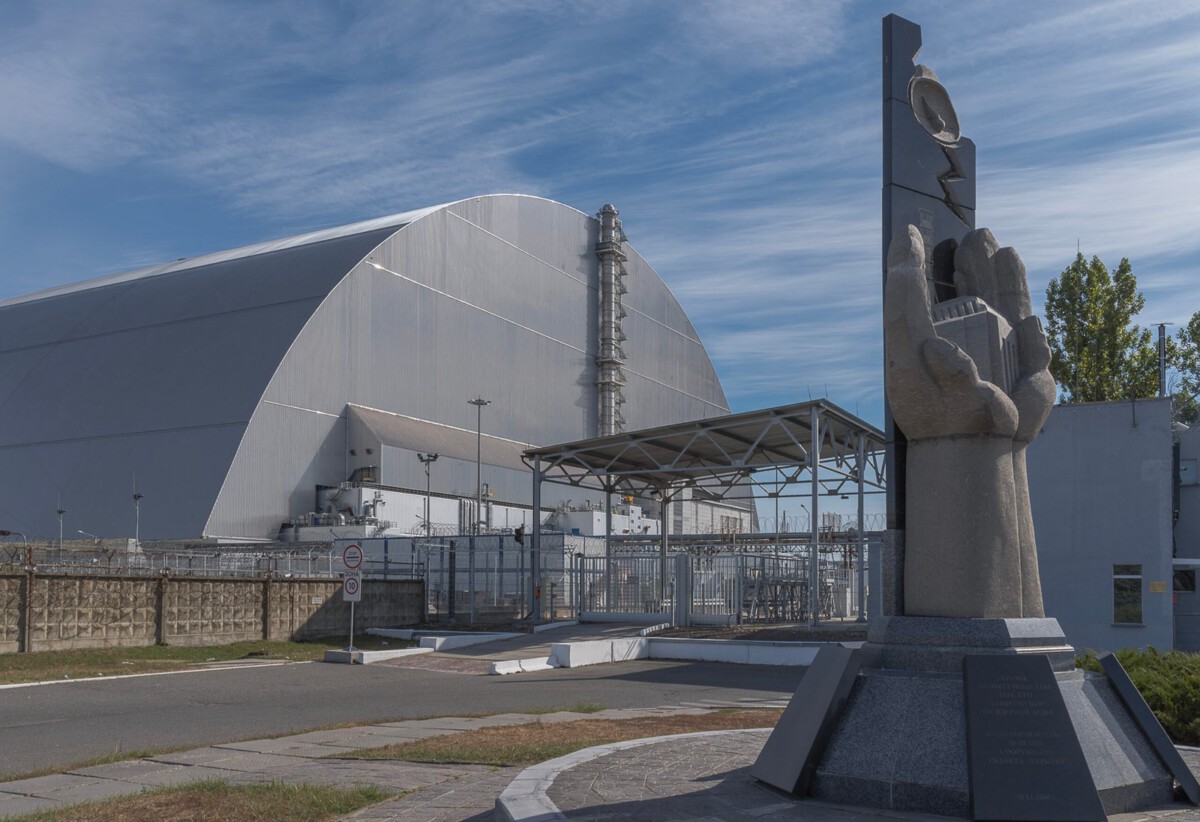Overview of the Exclusion Zone

The Chernobyl Exclusion Zone was established in the aftermath of the 1986 nuclear disaster, stretching about 30 kilometers around the infamous Reactor 4. Today, it stands as one of the world’s most haunting and mysterious regions, where time seems almost frozen. The Ukrainian government maintains strict control over the area, permitting only limited access for researchers, workers, and select visitors. Despite three decades passing, residual radiation remains a significant concern, affecting decisions about land use and habitation. The population inside the zone is minimal, with only a few hundred “self-settlers,” mainly elderly people who refused to abandon their homes. This stark landscape is dotted with abandoned towns, crumbling buildings, and a silence broken only by the sounds of wildlife. International teams, including the International Atomic Energy Agency, continue to monitor and study the Exclusion Zone. The Exclusion Zone is a paradox—a place of tragic history and surprising renewal.
Current Radiation Levels

Radiation levels throughout the Exclusion Zone are far from uniform, creating a patchwork of safety and danger. Some areas, especially near the original reactor and the Red Forest, still measure radiation doses up to ten times higher than safe thresholds for humans, according to Ukrainian government reports. Other spots, particularly on the outskirts, have radiation similar to natural background levels found elsewhere in Europe. Despite this, the threat is not entirely gone; radioactive particles can still be stirred up by wind or forest fires, which have increased in recent years. Strict dosimeter checks are mandatory for anyone entering or leaving, ensuring that exposure remains within recommended limits. Researchers use advanced equipment to map radiation hotspots and monitor fluctuations. These efforts are essential to protect visitors and workers, especially as tourism grows. The situation requires constant vigilance, as even small changes in the environment can shift radiation patterns.
Wildlife in the Exclusion Zone

In a twist of fate, the exclusion of humans has allowed wildlife to reclaim vast swathes of the Chernobyl region. Wolves, lynx, bison, wild boar, and even the rare Przewalski’s horse now roam the forests and fields, undisturbed by human interference. Studies by the Chernobyl Research Initiative have documented over 300 animal species thriving within the zone, some of which are endangered or have not been seen in the area for decades. The absence of farming, hunting, and urban development has created an unexpected wildlife haven. However, scientists have also observed genetic mutations in some animals, a result of chronic radiation exposure. Birds with albinism and insects with deformities have been noted, raising questions about long-term health effects. This living laboratory is attracting ecologists from around the world, eager to understand how nature adapts to such extreme conditions. The flourishing ecosystem is both inspiring and unsettling, blurring the line between disaster and renewal.
Human Impact and Resettlement

Despite the dangers, several hundred former residents, known as “self-settlers,” have returned to live inside the Exclusion Zone. Most are elderly, stubbornly attached to their ancestral homes regardless of official warnings or health risks. The Ukrainian government permits these individuals to remain under strict conditions, including regular health checks and environmental monitoring. For many, the psychological comfort of home outweighs the fear of invisible threats. Life is challenging; basic services are limited, and medical help can be hours away. Nevertheless, these residents grow their own food, tend livestock, and form a tight-knit community bound by shared experience. Studies have shown that while they face increased health risks, some self-settlers report higher life satisfaction compared to those relocated. This resilience in the face of adversity underscores the deep connection between people and place.
Tourism and Economic Opportunities

Chernobyl has unexpectedly become a tourism hotspot, drawing more than 120,000 visitors annually in recent years, a number that has continued to rise through 2024 and into 2025. Guided tours take curious travelers through the abandoned city of Pripyat, past the rusting Ferris wheel, and up to the edge of the reactor itself, now entombed in a massive steel sarcophagus. Tourism provides much-needed revenue to the region and helps fund ongoing cleanup and research efforts. Local entrepreneurs have opened guesthouses and cafes in nearby towns, offering a glimpse of life on the edge of disaster. However, the influx of tourists brings new challenges, including concerns about safety, site preservation, and the risk of spreading radioactive dust. Authorities continue to revise regulations to balance economic opportunity with public health and historical integrity. The fascination with Chernobyl shows no sign of waning, fueled by films, television, and social media.
Environmental Recovery and Research

Since the disaster, scientists from around the world have converged on Chernobyl to study how ecosystems recover from extreme contamination. Research teams from the Ukrainian National Academy of Sciences regularly sample soil, water, and air, tracking the movement of radioactive elements through the environment. Recent studies have found that some plants have evolved resistance to radiation, while certain fungi thrive by feeding on radioactive compounds. These findings may one day help develop new bioremediation techniques for contaminated sites elsewhere. Despite pockets of high radiation, overall levels have declined steadily, allowing many species of plants and animals to return. The zone serves as a unique open-air laboratory, providing insights into long-term environmental recovery. Collaboration between Ukrainian and international scientists remains crucial for understanding Chernobyl’s ongoing legacy. The lessons learned here are influencing global approaches to nuclear safety and environmental restoration.
The Role of Technology in Monitoring

Modern technology is reshaping how experts monitor the Exclusion Zone. Drones equipped with radiation sensors are flown over hazardous areas, mapping contamination with pinpoint accuracy. Satellite imagery offers a bird’s-eye view of ecosystem changes and helps track wildlife migration patterns. These advancements make it possible to collect vast amounts of data without putting human lives at risk. Remote sensors buried in the ground continuously transmit radiation readings, allowing for real-time analysis and rapid response to any changes. The Ukrainian government has also implemented advanced security systems to detect unauthorized entry and prevent looting or vandalism. Artificial intelligence is being used to process data, identify trends, and predict future risks. This fusion of technology and science is critical for managing the zone’s complex challenges and ensuring long-term safety.
Cultural Significance and Memory

Chernobyl’s story has become a powerful symbol of both tragedy and resilience, capturing the world’s imagination through books, films, and art. The HBO miniseries “Chernobyl” sparked a new wave of global interest, prompting countless visitors to seek out the real locations behind the drama. Memorials and museums within the zone and in Kyiv honor the workers and residents who suffered and sacrificed in the aftermath. Survivors’ stories are preserved through oral histories, documentaries, and exhibitions, ensuring that the lessons of Chernobyl are not forgotten. The site has inspired artists, musicians, and writers to explore themes of loss, hope, and renewal. Annual commemorations draw former residents and their families, who gather to remember loved ones and reflect on the disaster’s impact. The cultural legacy of Chernobyl is as enduring as its physical scars, shaping public attitudes toward nuclear power and disaster response.
Future Prospects for the Exclusion Zone

The future of Chernobyl’s Exclusion Zone is being hotly debated by policy makers, scientists, and local communities alike. Some envision a vast nature reserve, a place where humans are visitors and wildlife reigns supreme. Others see potential for renewable energy, with solar power farms already operating on the site of former villages. The Ukrainian government is considering additional economic initiatives, including expanding eco-tourism and research facilities. However, any plans must navigate the persistent risks of radiation, environmental instability, and the unpredictable impacts of climate change. International involvement remains strong, with collaborative projects aimed at sustainable development and continued monitoring. The Exclusion Zone may continue to evolve, shaped by science, policy, and the enduring memory of its past. The decisions made here will influence how the world deals with other contaminated regions in the future.
Lessons from Chernobyl

Chernobyl stands as a monument to both the dangers of unchecked technology and the resilience of life in the face of adversity. Its lessons have shaped nuclear safety protocols worldwide, prompting stricter regulations and emergency preparedness plans. The disaster highlighted the importance of transparency, international cooperation, and robust scientific research in managing technological risks. The ongoing story of the Exclusion Zone reveals both the limits of human control and the astonishing adaptability of nature. By studying Chernobyl, scientists are uncovering new ways to heal contaminated environments and protect future generations. The zone’s transformation from a symbol of catastrophe to one of renewal offers hope and caution in equal measure. The world will continue to watch Chernobyl, searching for answers and inspiration in its silent, enduring landscape.





